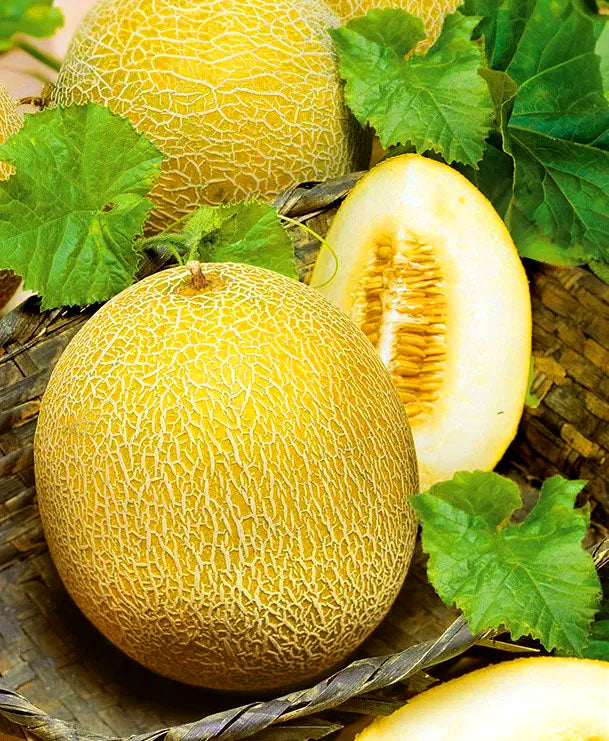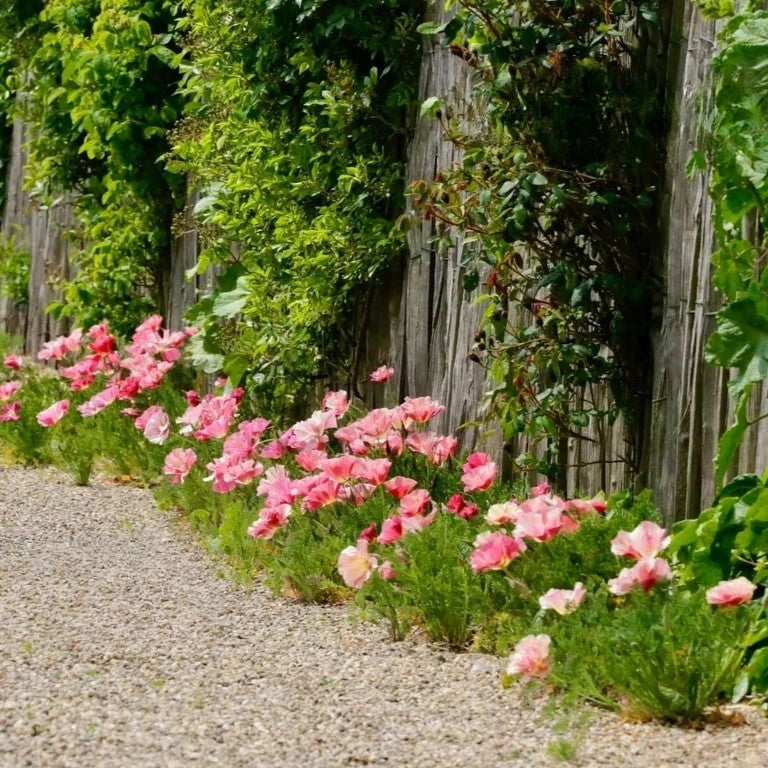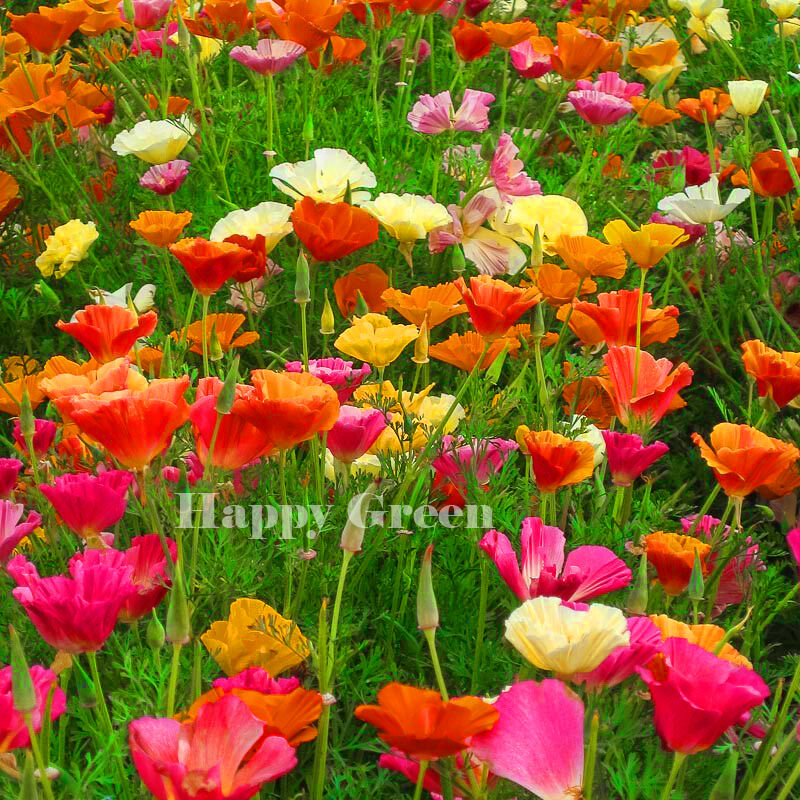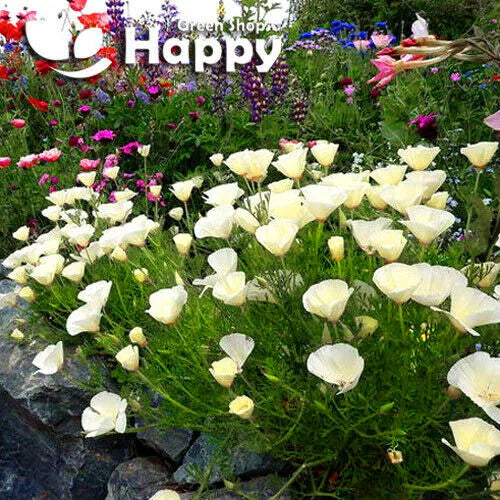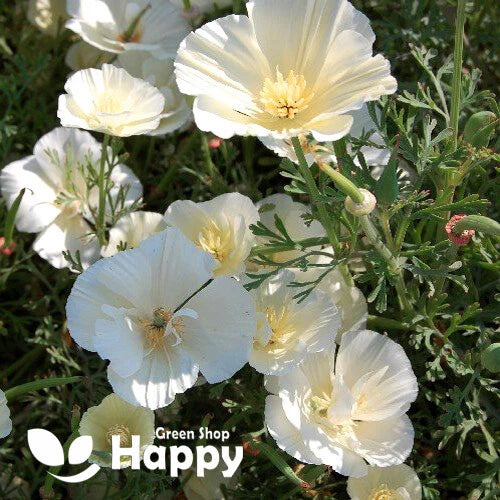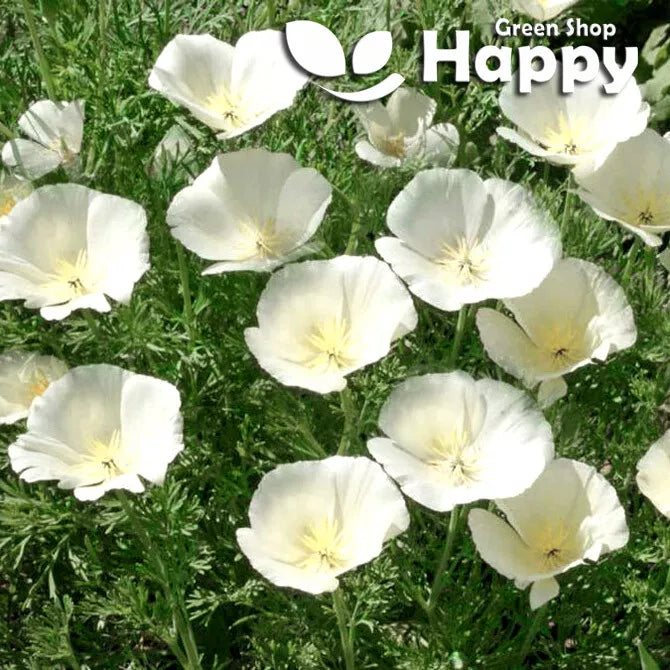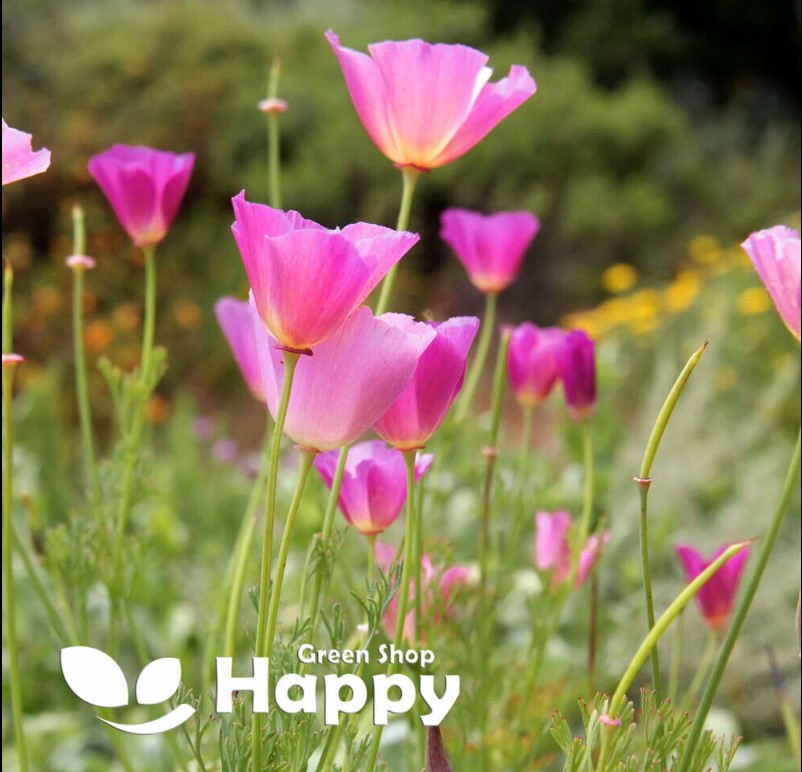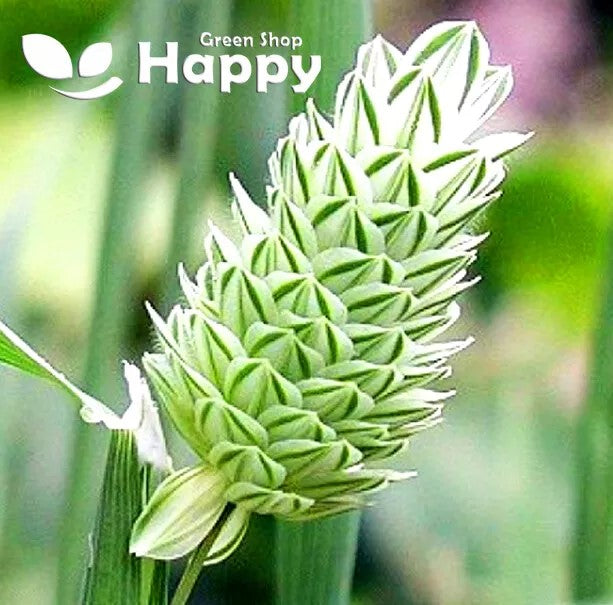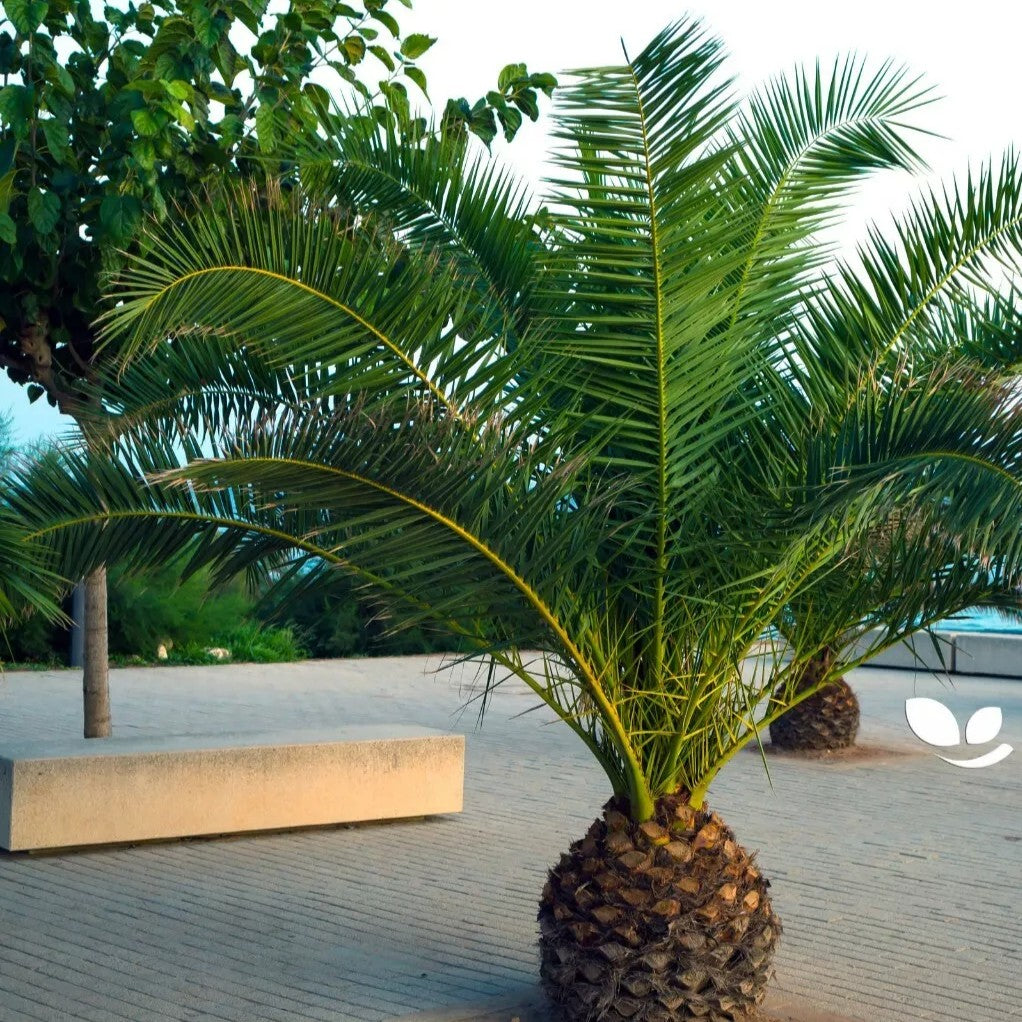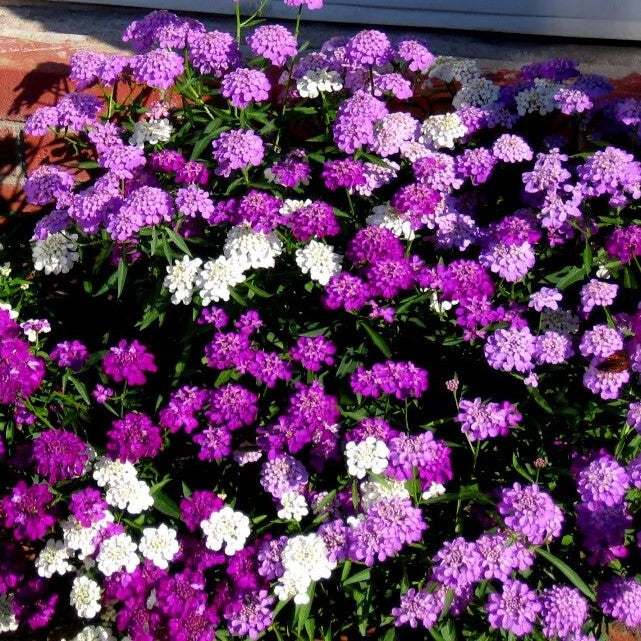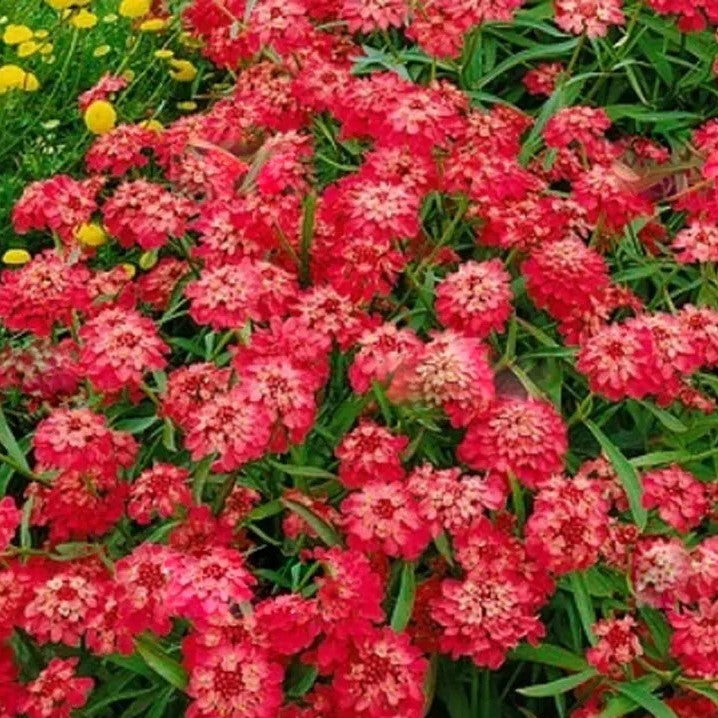Sort by:
1113 products
1113 products
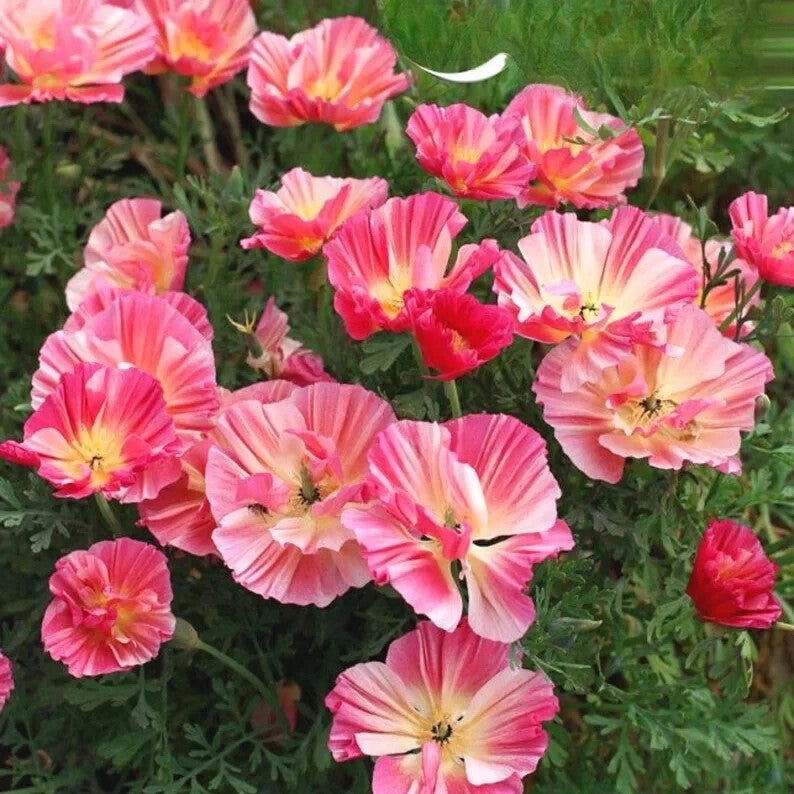
California Poppy Frilly Fun Appleblossom - 200 seeds (Eschscholzia californica)
£1.15
Unit price perCalifornia Poppy Frilly Fun Appleblossom - 200 seeds (Eschscholzia californica)
£1.15
Unit price perCalifornia Poppy Frilly Fun Appleblossom – Seeds (Eschscholzia californica)
California Poppy ‘Frilly Fun Appleblossom’ is a cheerful, low-maintenance annual that produces abundant frilly, soft pink blooms all summer long. This compact, hardy variety creates a carpet of pastel color in borders, rockeries, and containers. Fast-growing and drought-tolerant, it’s perfect for brightening gardens while attracting bees and other pollinators.
Why Grow "Frilly Fun Appleblossom"
-
Frilly, soft pink blooms with abundant summer color
-
Compact, low-maintenance, and hardy
-
Drought-tolerant and fast-growing
-
Attracts bees and pollinators
Key Features
-
Type: Annual (Eschscholzia californica)
-
Height: 20–30 cm
-
Flowering: Late spring to summer
-
Position: Full sun
-
Uses: Borders, rockeries, containers, pollinator gardens
Ideal For
-
Adding pastel color to borders and beds
-
Rockeries and container planting
-
Pollinator-friendly gardens
-
Beginner gardeners seeking easy-to-grow flowers
Sowing & Growing
-
Sow outdoors: Early spring after frost danger has passed
-
Germination: 7–14 days
-
Thin seedlings: 15–20 cm apart
-
Prefers full sun and well-drained soil
California Poppy Mix – Bright, Cheerful Blooms
California Poppies (Eschscholzia californica) offer vibrant, cup-shaped flowers in a mix of stunning colors that brighten any garden. Hardy and low-maintenance, these annuals thrive in sunny spots and well-drained soil, creating a natural, carefree meadow effect.
What Makes It Special
-
Vibrant, colorful blooms
-
Hardy and drought-tolerant
-
Easy to grow and maintain
-
Creates a natural, meadow-like effect
Key Features
-
Annual plant
-
Grows 30–45 cm tall
-
Blooms from late spring to autumn
-
Thrives in full sun with well-drained soil
-
Attracts bees and pollinators
Ideal For
-
Garden borders and beds
-
Wildflower meadows
-
Container planting
-
Pollinator-friendly gardens
Sowing
-
Sow directly outdoors after last frost
-
Plant seeds 0.5 cm deep
-
Germination: 7–14 days at 15–20°C
-
Space 15–20 cm apart
-
Minimal watering once established
California Poppy White Seeds (Eschscholzia californica)
California Poppy White is a vibrant annual with elegant white cup-shaped flowers and finely divided, gray-green foliage. Blooming from spring to early summer, it brightens borders, rock gardens, and wildflower meadows. Easy to grow and drought-tolerant, it attracts pollinators and adds a soft, natural charm to any garden.
What Makes It Special
-
Pure white, cup-shaped blooms all spring and early summer
-
Hardy, drought-tolerant, and low-maintenance
-
Attracts bees and other pollinators
Key Features
-
Botanical name: Eschscholzia californica
-
Annual
-
Height: 25–40 cm
-
Bloom time: Spring to early summer
Ideal For
-
Rock gardens, borders, and wildflower meadows
-
Pollinator-friendly gardens
-
Sunny, well-drained areas
Sowing
-
Sow outdoors Mar–Jun
-
Cover seeds lightly with soil
-
Germination: 7–14 days at 15–20°C
-
Thin seedlings 20–30 cm apart
-
Flowers the same year
California Poppy ‘Purple Gleam’ – Seeds (Eschscholzia californica)
California Poppy ‘Purple Gleam’ (Eschscholzia californica) is a striking variety with silky lilac-pink flowers that glow in the sun. This hardy, drought-tolerant annual thrives in poor soils and is perfect for borders, rockeries, and wildflower meadows. Flowering from summer into autumn, it brings long-lasting color while attracting bees and butterflies. Easy to grow and self-seeding, it will return year after year with minimal effort.
Why Grow "Purple Gleam"
-
Unique lilac-pink flowers with a shimmering finish
-
Long flowering season from summer to autumn
-
Hardy, drought-tolerant, and low-maintenance
-
Attracts bees, butterflies, and pollinators
Key Features
-
Type: Hardy annual (Eschscholzia californica)
-
Height: 20–30 cm
-
Flowering: Summer to autumn
-
Position: Full sun
-
Uses: Borders, rockeries, meadows, containers, pollinator gardens
Ideal For
-
Naturalistic and wildflower-style gardens
-
Adding soft, unusual color to borders and beds
-
Rockeries and container planting
-
Easy, low-maintenance seasonal color
Sowing & Growing
-
Sow outdoors: March–May or September for earlier blooms
-
Germination: 14–21 days
-
Thin seedlings: 15–20 cm apart
-
Prefers poor to moderately fertile, well-drained soil
-
Self-seeds freely for natural displays
Canary Creeper – Seeds (Tropaeolum peregrinum)
A charming climbing annual, the Canary Creeper is a cousin of the nasturtium, known for its deeply cut leaves and unusual, canary-yellow, fringed flowers. A vigorous, fast-growing climber, it will quickly cover trellises, arches, and fences, bringing a cheerful splash of color and attracting pollinators to your garden.
Highlights
-
Exotic canary-yellow flowers with fringed petals
-
Quick-growing climbing annual
-
Attractive, deeply lobed foliage
-
Long flowering period from summer until frost
-
Pollinator-friendly
Key Features
-
Botanical Name: Tropaeolum peregrinum
-
Seed Count: Approx. seeds per pack (please confirm quantity)
-
Height/Spread: 2–3 m when supported
-
Position: Full sun, well-drained soil
-
Flowering Period: Summer to first frost
Perfect For
-
Covering trellises, fences, arches, or obelisks
-
Quick vertical garden interest
-
Pollinator-friendly and wildlife gardens
-
Adding an exotic look to cottage gardens
Sowing Instructions
-
Sow indoors 4–6 weeks before the last frost or outdoors after frost danger has passed
-
Plant seeds 1.5–2 cm deep in pots or soil
-
Provide climbing support for vines
-
Germination: 10–21 days at 15–20°C
-
Flowers 10–12 weeks after sowing
Canary Grass Seeds (Phalaris canariensis)
Canary Grass is a fast-growing annual grass valued both as an ornamental plant and as a seed source for cage birds such as canaries, finches, and budgerigars. With its upright stems and dense, oval-shaped seed heads, it adds texture to gardens and is especially popular for wildlife plots and dried floral arrangements.
What Makes It Special
-
Produces dense, oval-shaped seed heads attractive in borders and dried bouquets
-
Seeds are highly nutritious, making it an excellent choice for bird feed
-
Quick and easy to grow, even for beginners
-
Thrives in most soils with minimal care
Key Features
-
Botanical name: Phalaris canariensis
-
Common name: Canary Grass
-
Seed count: Approx. seeds per pack
-
Height/Spread: 60–120 cm tall, 20–40 cm spread
-
Position: Full sun, well-drained soil
-
Flowering/Seeding period: Summer to early autumn
-
Lifespan: Annual grass
Ideal For
-
Bird seed production (canaries, finches, budgerigars)
-
Ornamental borders
-
Fresh and dried floral arrangements
-
Wildlife-friendly gardens
-
Agricultural use as a grain crop
Sowing Instructions
-
When to sow: March–May outdoors after frost, or under cover earlier for transplanting
-
How to sow:
-
Sow directly into prepared soil in a sunny location
-
Cover lightly with soil (0.5–1 cm deep)
-
Water gently to keep soil moist until germination (7–14 days)
-
-
Spacing: Thin or transplant seedlings 20–30 cm apart
-
Care: Requires little maintenance; thrives in sun and tolerates a range of soils
Canary Island Palm – Seeds (Phoenix canariensis)
The Canary Island Palm (Phoenix canariensis) is a striking ornamental palm admired for its bold, arching fronds and robust trunk. Native to the Canary Islands, this slow-growing palm makes an impressive specimen in large containers or gardens in warm climates. In cooler regions, it can be grown indoors or in conservatories for an exotic, tropical look.
Why Grow "Canary Island Palm"
-
Majestic palm with dramatic, feathery fronds
-
Slow-growing, long-lived specimen plant
-
Perfect for containers, patios, and conservatories
-
Creates an instant tropical atmosphere
Key Features
-
Type: Evergreen palm (Phoenix canariensis)
-
Height: Up to 10–20 m in warm climates; smaller in pots
-
Growth: Slow, forming a stout trunk
-
Position: Full sun
-
Uses: Containers, specimen planting, conservatories, exotic gardens
Ideal For
-
Tropical or Mediterranean-style gardens
-
Patios and large containers
-
Conservatories and bright indoor spaces
-
Statement landscaping plant
Sowing & Growing
-
Soak seeds in warm water for 24–48 hours before sowing
-
Sow indoors: Year-round in warm conditions
-
Germination: 6–12 weeks at 22–28°C
-
Use free-draining compost, keep moist
-
Transplant seedlings into larger pots as they grow
Candytuft ‘Fairy Mix’ Seeds (Iberis umbellata)
Candytuft ‘Fairy Mix’ is a charming annual featuring clusters of small, delicate flowers in shades of white, pink, and purple. Its compact, bushy habit makes it perfect for borders, rock gardens, and containers. Easy to grow and long-flowering, it adds a soft, colorful touch to summer gardens and attracts pollinators.
What Makes It Special
-
Clusters of small, delicate flowers in white, pink, and purple
-
Compact, bushy growth ideal for borders and containers
-
Long-flowering and low-maintenance
-
Attracts bees and butterflies
Key Features
-
Botanical name: Iberis umbellata
-
Variety: ‘Fairy Mix’
-
Seed count: Approx. seeds per pack
-
Height/Spread: 20–30 cm tall, 20–25 cm spread
-
Position: Full sun; well-drained soil
-
Flowering period: May–July
Ideal For
-
Borders, edging, and rock gardens
-
Containers and patio displays
-
Pollinator-friendly gardens
-
Softening paths and garden edges
Sowing Instructions
-
When to sow: February–April indoors; March–May outdoors
-
How to sow:
-
Sow seeds thinly on the surface of moist seed compost and press lightly
-
Germination occurs in 10–14 days at 18–20°C
-
-
Transplanting: Thin or transplant seedlings 15–20 cm apart
-
Care: Water moderately; deadhead spent flowers to prolong blooming
Candytuft Carmine Red – Seeds (Iberis umbellata)
Candytuft Carmine Red (Iberis umbellata) is an annual producing vibrant carmine-red clusters of flowers from late spring to early summer. Its compact, bushy habit makes it perfect for borders, rockeries, and containers. Easy to grow and low-maintenance, this variety attracts pollinators and adds striking color and charm to any garden space.
Why Grow "Carmine Red"
-
Bright carmine-red flower clusters
-
Long flowering season from late spring to early summer
-
Compact and bushy, ideal for borders and containers
-
Attracts bees, butterflies, and other pollinators
Key Features
-
Type: Annual (Iberis umbellata)
-
Height: 25–30 cm
-
Flowering: Late spring to early summer
-
Position: Full sun
-
Uses: Borders, rockeries, containers, pollinator gardens
Ideal For
-
Adding vibrant color to borders, beds, and containers
-
Rockeries and patio planting
-
Pollinator-friendly garden designs
-
Gardeners seeking low-maintenance, long-flowering annuals
Sowing & Growing
-
Sow indoors: 6–8 weeks before last frost
-
Sow outdoors: After frost danger has passed
-
Germination: 10–14 days
-
Space seedlings: 20–25 cm apart
-
Prefers well-drained soil and full sun
Showing 162/1113




